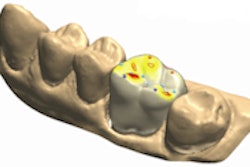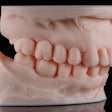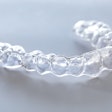Scientists from Stanford University and the Ginzton Technology Center at Varian Medical Systems have been awarded a $3.6 million, five-year research grant from the National Institutes of Health (NIH) to improve the quality of CT images for patients with metal objects in their bodies, such as dental restorations and hip implants.
Josh Star-Lack, Ph.D., a senior scientist in Varian's Ginzton Technology Center for research and development, and Rebecca Fahrig, Ph.D., an associate professor of radiological sciences at the Stanford University School of Medicine, will serve as co-principal investigators on the project.
"Modern radiotherapy of cancer often relies on high-quality CT images for planning advanced forms of treatment," Star-Lack said. "You also need good cone-beam CT images from a machine-mounted imager for patient positioning and for assessing tumor response to treatment. Unfortunately, severe image distortions can be created when metal is present, making it harder to know what you're looking at."
Distortions can be greatly reduced by using very high energy (megavoltage) x-rays that better penetrate the metal, according to Star-Lack. However, megavoltage imaging also has significant disadvantages.
"You need a lot of dose, and the quality of images is poor, particularly in soft tissues," Star-Lack said. "Our research grant will be used to develop tools to achieve the best of both worlds by combining kilovoltage cone-beam CT data with a limited amount of megavoltage data to create a composite image with less distortion and good soft-tissue resolution."
As part of the project, researchers from Varian and Stanford will develop new megavoltage x-ray detection hardware and image reconstruction software and will validate the technology in a clinical trial to be conducted by Stanford.
"The rapid translation of these advances into clinical practice could improve the accuracy of radiotherapy planning and image guidance for patients with metal objects near the targeted tumors," Fahrig said.
Copyright © 2010 DrBicuspid.com



















